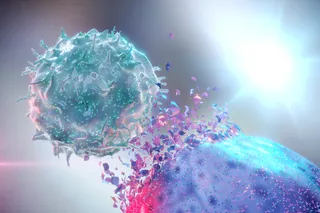Left: the silk mesh 1 day after being seeded with fibroblast cells. Right: 4 days after seeding.
What’s the News: People have long known that spider silk has many practical uses, even in the medical field; Ancient Greeks, for example, employed the strong, flexible fiber as bandages
. But the clinical uses of spider silk may stretch beyond that: scientists may someday be able to use the silk to help create artificial skin, according to new research out of the Hannover Medical School in Germany. In the study, published recently in the journal PLoS One
, researchers successfully grew tissue-like skin on a mesh frame of silk harvested from golden silk orb-weaver spiders
. What’s the Context:
Adult skin is made up of two tissue layers: the epidermis and dermis. The epidermis is the outermost layer of the skin, which provides a sort of barrier against the environment. Below this ...













